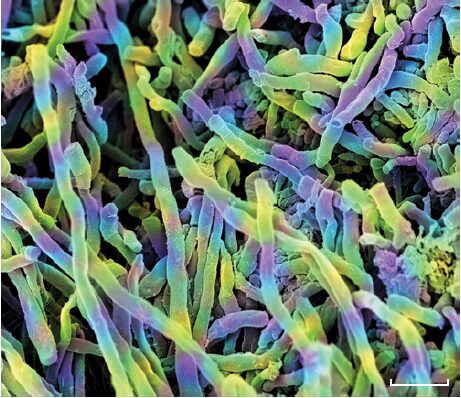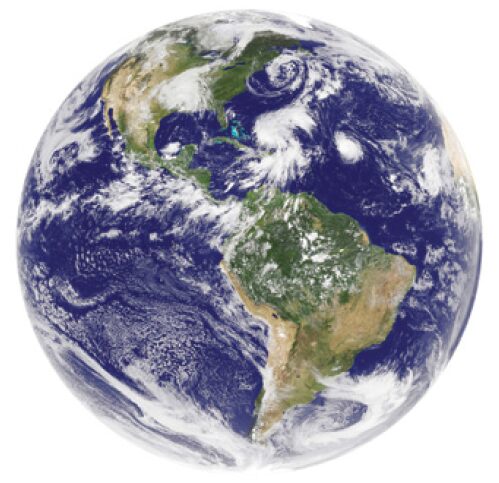What is microbiology?
Introduction to Microbiology
- Microbiology is the study of microorganisms like: Bacteria, Virus, fungi, Alage, Protozoa, etc.
- Microorganisms are defined as those organisms which is too small to be seen clearly by the unaided eye.
- They are usually 1mm or less in diameter.
- However small size is a major characteristic of microbes.
- Some microbes are visible without microscopes such as bread molds and filamentous photosynthetic microbes (e.g., “pond scum”).
- Earth consists of more than 1030 microorganisms (or microbes for short) distributed among an estimated 1 trillion (1012) species.
- Microbes may be microscopic in size, but they are magnificent in their evolutionary diversity.
A Day in the Life of a Microorganism
- Microorganisms exist in such diversity and vast numbers in the oceans, landmasses, and atmosphere, they must play important roles in the very survival of other organisms on the planet.
- These microscopic organisms play important role on Earth.
Microorganisms in the Oceans
- The oceans and seas includes more than 70% of Earth and express the base that keeps our planet in a habitable state.
- A critical factor in this maintenance is the marine microbiome, which, composed of some 3 × 1029 microbes, dominates ocean life.
- High densities of these organisms can be found anyplace from the frozen polar regions to the hot, volcanic thermal vents and the cold seeps on the dark seafloor. Making up 90% of the ocean biomass, this marine microbiome is critical to regulating life on Earth.
Every day, many of the dwellers in this microbial community perform the following:
- Create the foundation for all marine food webs by performing photosynthesis (in sunlit areas) and chemosynthesis (in dark areas) to convert carbon into sugars and nutrients on which all fish and ocean mammals directly or indirectly depend.
- Provide up to 50% of the oxygen gas we breathe and many other organisms use to stay alive by performing photosynthesis.

- Control atmospheric aerosols and cloud formation through the sea spray ejected into the atmosphere.
- Consume 50% of the dead plant and animal matter generated on Earth each year.
- Operate as the engines that drive and control nutrient and mineral cycling and that regulate energy flow, both of which can affect long-term climate change.
Viruses in Marine ecosystem
- Viruses are the most abundant infectious agents on Earth.
- There are an estimated 1031 viruses in the oceans and many of these viruses remain uncharacterized. However, they possibly infect marine microbes.
- Because many of these microbes are essential in the action listed above, viruses play an important role in the global cycling of nutrients and elements, such as carbon and nutrients.
- In fact, infections by marine viruses are responsible for releasing and recycling some 150 gigatons of carbon per year.
- Today, microbiologists around the world are discovering many marine microbes that are new to science.
- What are the daily occupations of these and other mysterious microbes and viruses yet to be identified and cataloged?
- Undoubtedly, many play useful and probably intimate roles, the consequences of which we have yet to discover. The scientific studies are just beginning.
Microorganism on the Land
- Microbes on dry land are amazing in their daily routine than their marine counterparts. In fact, every time you walk on the land, you step on billions of microorganisms.
- Furthermore, like their cousins in the oceans, they can be discovered in every possible place, from the peak of the mountains to the deepest caves. In fact, a kilogram of moist garden soil can have up to 1013 microbes living in the waterfilled pore spaces in the soil.

This diverse soil microbiome is responsible for many daily activities essential to life. Here are some of the activities soil microorganisms perform:
- Carry out 90% of all biochemical reactions occurring in the soil.
Microorganisms on the Atmosphere
- More than 315 different types of bacteria have been recognized in air masses 10 kilometers above the Earth’s surface.
- These microbes together with fungal spores account for 20% of all particles—biological and non-biological—in the atmosphere.

Although less studied than the ocean and soil microbiomes, scientists believe the atmospheric communities perform the following roles:
- Play an integral role with marine microbes in the formation of water vapor (clouds).
- Help form raindrops and snowflakes.
- Affect the chemical composition of the atmosphere.
- Influence weather cycles, alter the composition of rain and snow, and affect daily weather patterns.
- Although we have much to learn and understand about microbes in the clouds, it is evident that they help stabilize the atmosphere.
Microorganisms in the Earth’s Subsurface
- Consider that the oceans, soil, and air represent only those environments most familiar to us.
- In fact, a diverse microbial workforce is being cataloged anywhere there is an energy source and water.
- For example, scientists have drilled 2,400 meters into the Earth’s subsurface on land or below the seafloor.
- In the solid rock, they have discovered another frontier composed of microbes that are sealed off from the rest of the world.
- These intraterrestrials (microbes living in sediment and rock) are another diverse workforce that, even buried in rock, are believed to make up more microbial biomass than that of all the microbes in water and soil.
- Scientists believe these intraterrestrials also are involved with the daily recycling of minerals and stabilizing the biogeochemical health of our planet.
- Today, the workforce composing the global microbiome is still being cataloged and their numbers and daily activities keep growing.
- As Louis Pasteur, one of the fathers of microbiology, once stated, “Life [plant and animal] would not long remain possible in the absence of microbes.”
- Microbial communities inhabit the bodies of all plants and animals. For animals, most every species, from termites to bees, from cows to humans, has an intimate microbiome associated with it.
- For example, the human microbiome consists of some 40 trillion (40 × 1012) microbes, which is about equal to the number of cells (30 × 1012) building the human body. These outwardly invisible strangers have established themselves since birth as separate and unique communities of microbes on the skin, in the respiratory tract, and especially in the gut.

- The human gut microbiome is essential for a healthy life.
- Although some are transient, most of the species spend each day carrying out an amazing array of metabolic reactions to help us resist disease, regulate our digestion, maintain a strong immune system—and even influence our risk of obesity, asthma, and allergies.
- One aspect of a microbe’s daily life that we have overlooked until now is its role in infectious disease.
- This omission was done on purpose because only a very small minority of microbes are responsible for infections and disease.

- Although such disease-causing agents, called pathogens, are rare, some, such as those causing diseases like plague, malaria, and smallpox, throughout history have swept through cities and villages, devastated populations, killed great leaders and commoners alike, and, as a result, have transformed politics, economies, and public health on a global scale.
Reference and Sources
- https://silo.pub/environmental-science-a-global-concern-y-3734613.html
- http://samples.jblearning.com/9781284100952/9781284101041_CH01_Secured_20985_1.pdf
- https://www.scribd.com/document/355675188/Introductory-MicroBiology
- https://www.researchgate.net/publication/308949986_Scaling_laws_predict_global_microbial_diversity
- https://www.researchgate.net/publication/270396373_Rethinking_the_marine_carbon_cycle_Factoring_in_multifarious_lifestyles_of_microbes
- https://en.wikipedia.org/wiki/Microorganism
Also Read:
- Our Team
- Water as a Microbial Habitat
- Roles of Viruses In Aquatic Ecosystems
- Microorganisms in Freshwater Ecosystems
- Roles of Viruses In Aquatic Ecosystems
- Microorganisms in Benthic Marine Environments
- Exposure and Transmission of Infectious Disease
- Probiotics: Introduction, Development and Uses in Agriculture
- Mutations: Introduction, Types, Causes and Repair Mechanisms
- Histoplasmosis: Symptoms, Pathogenesis, Treatment and Prevention
- Cold sores : Introduction, Entry, Symptoms, Diagnosis and Cure
- Biosafety Cabinet: Introduction, Development and Safety guidance
- CRISPR-Cas9 Gene editing tool: Introduction, Principles, Uses & Applications

Please notify me when giving assignment, lectures for registering this course